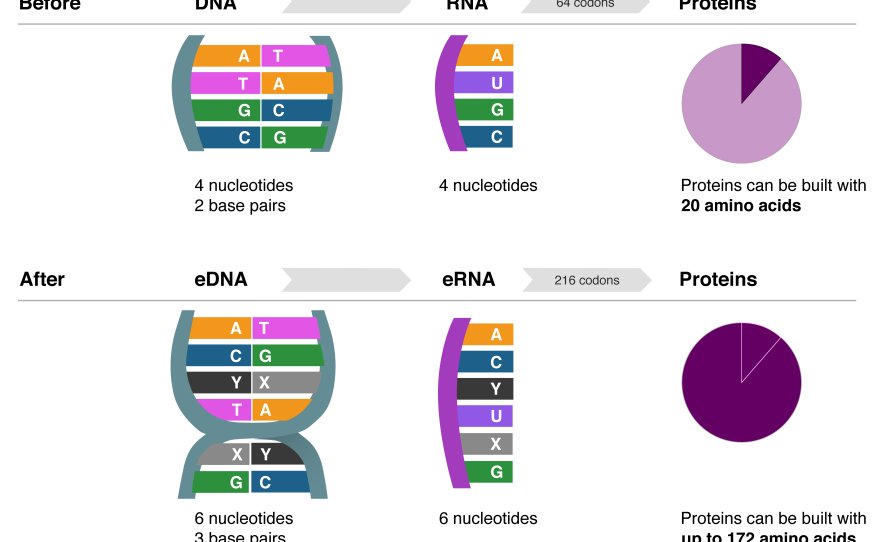In high school biology, you probably learned that DNA has four chemical building blocks. You can think of them as letters: A, T, C and G. But now, Scripps Research Institute scientist Floyd Romesberg says it's time to welcome two more letters to the alphabet.
"X and Y are unnatural nucleotides that we made," Romesberg said, describing the artificial letters he and his colleagues fed into the DNA of a bacterium. After 15 years of trying — and in a first for the science of artificial life — they got this DNA to work inside a living bacterium. The researchers describe their results in a paper published online Wednesday by the journal Nature.
"We increased the alphabet from four letters and two base pairs to six letters and three base pairs," Romesberg said, "allowing for storing more information in DNA than has been possible."
With two additional DNA building blocks, the bacterium could one day code for many more proteins, some which might not even exist yet in nature. A San Diego biotech called Synthorx launched this week to build on this research, hoping it could lead to new drugs.
Romesberg's creation has been called "alien DNA," but he says not to worry about mutant organisms emerging from his experiments. Without a steady feed of lab-grown X and Y nucleotides, the bacterium will return to normal, replicating natural DNA with just two base pairs.
"If, God forbid, someone spilled this on the floor, got it on their tennis shoes, and walked home to their living room, it can't survive," Romesberg said. "If it tries to grow outside the controlled environment of the lab, the unnatural base pair simply vanishes and it reverts to a completely natural sequence of DNA."






